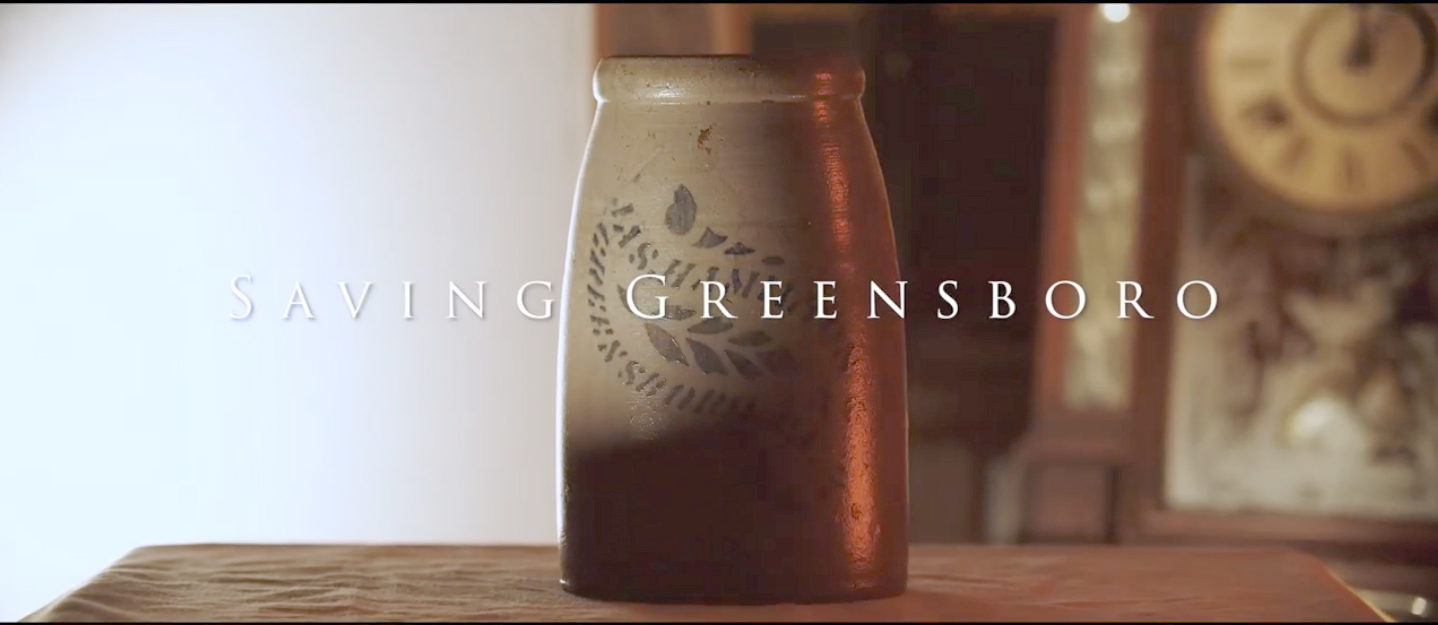Previously called Delight, the small town of Greensboro sits snugly against the mighty Monongahela and was once a social, commercial, and manufacturing hub for the area. One of the reasons the Mingo Indians called the area Delight was its rich and fertile soil; this soil provided birthed the industries that would spread Greensboro’s influence across America. Saving Greensboro, a documentary film by Paul Hicks and Harry Oakes, explores the history of Greensboro and the industries that made it famous – glass and pottery.
“Back in the fall of 2019, Harry and I wanted to create a larger film project, more than anything we had created during our undergrad years,” shares Paul. Harry and Paul heard that a grant was available to fund projects that helped the surrounding community. They contemplated topics, including creating a documentary about the Greene County Historical Society. Chuck Bailey, a long-time friend, knew the duo was looking for a topic and introduced them to Glenn Toothman who had an idea that might interest them. Glenn took Paul on a tour of Greensboro and shared its history of pottery and glassworks.
“I was enamored by his storytelling and fell in love with the subject right away,” says Paul. “Harry and I finalized the grant proposal shortly after this tour took place, and we learned that it was approved a couple of days later!”
Before filming, Harry and Paul spent time conducting research as Glenn told the story of Greensboro. During his research, Paul spent months searching photographs and historical documents. “It was tough finding first-hand historical sources about this small town’s history, but I was also surprised by the high-quality preservation and documentation for a lot of these materials.”
After their months of research, Harry and Paul had fleshed out their idea and knew what interviews and reenactments they would need to film. In addition to working with Glenn, they involved other locals in the documentary. Local pottery artisans, Jim and Linda Winegar, allowed the duo the use of their pottery studio for the reenactment scenes. “They blew us away with their skill and were so accommodating to our vision. If it weren’t for them, I really do not think the project would look as quality as it does now,” Paul says.
The documentary wasn’t without its difficulties. Neither Harry or Paul or had worked on a project of this scope and importance. Technical difficulties prolonged the project’s delivery time. Once the pandemic hit and the university shut down, they faced the difficulty of getting the film edited. Collaboration was difficult, but they split the work and managed to produce a high-quality documentary. “Harry deserves so much credit for his editing work on the film, since he did about 90% of it on his superior computer hardware. I would travel to his place back in Maryland and work alongside him sometimes, but he really did pull off its final look,” Paul says. “I always say this, but I really do not deserve a friend as hardworking or as incredibly talented as Harry.”
Both Paul and Harry are from Maryland and attended Waynesburg University, studying communication with an electronic media focus. During their time at Waynesburg, they both participated in the Bonner Scholar program. Paul currently serves as Graduate Assistant, working as the official photographer/videographer for University Relations. He is currently pursuing an MBA with Waynesburg. “Living in this area for the past five years has taught me so much about what love for your community truly means. I have made more fruitful friendships with people in this community than I ever could’ve imagined when I first stepped into Waynesburg,” Paul shares. “This town feels like my home far more than Annapolis in this way. Glenn Toothman and Chuck Bailey are only a few glowing examples of the many community-builders I have met over the years. Truly, I believe Waynesburg continues to culturally thrive because of these people who are so passionate about preserving the town’s memories.”
“Heritage and history from long ago can still greatly impact a community today. With Greensboro, there’s a beautiful memory preserved by the remnants of the potters’ families and artifacts that still exist. Members of the community should feel proud of where their ancestry comes from, how hard they’ve worked to keep this community alive,” Paul says in regard to the film’s message. “Greensboro to me is a microcosm of the American spirit that built this country up from the time it first became a nation. Albert Gallatin, a Swiss man, came to this area long ago and saw opportunity for a glass industry. Even though it wasn’t profitable in its short run, the fact that he took as many risks as he did is still inspiring. In this small town south of Pittsburgh, these glass workers and pottery makers were significant to the development of America.”
Paul says that he has a few other ideas for some great documentaries and is spending time researching ideas and funding. After the documentary was finished, original plans called for a showing at the Historical Society, but with the pandemic, they decided the most effective way to show the film would be through social media. It is currently available for viewing on the GCHS Facebook page, @GCHSofPA.
